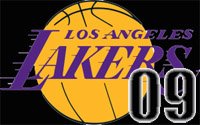The Angels have had a wacky offseason thus far. Admittedly, this is nothing like last year, when they trade Orlando Cabrera for Jon Garland and, while Halo fans everywhere waited for A-Rod, the front office signed someone else entirely. Then, Torii Hunter. Tony Reagins moves in mysterious ways, it seems, and his second offseason has been no different.
Gone are Jon Garland, Garret Anderson, and Francisco Rodriguez. Casey Kotchman left for Mark Teixeira who, like so many mid-season signings, left after the ALDS. Juan Rivera was resigned, as was Darren Oliver, while former Colorodo Rockies closer Brian Fuentes moved into the home bullpen at Angel Stadium.
Something feels incomplete.
The Angels will likely be playing Erick Aybar, Brandon Wood, and Kendry Morales next season. That's three kids in a lineup which also includes an aging Chone Figgins. This is not a team built to score lots of runs. Run prevention will make or break this team, and because I'm confident there are no forthcoming signings, we'll take a look at pitching and defense.
We'll start, as the Angels have for so long, with John Lackey.
Note: I'm using a pitching stat called tRA here. Created by the pretentious Seattle-ites over at Lookout Landing, it's becoming a popular (and well-grounded) statistic which isolates pitching performance to things pitchers can control. That is, pitchers can control walks, strikeouts, hit-by-pitches, and a couple other basic baseball plays. They can't control Derek Jeter at shortstop and they can't control playing in a piece of crap like Rangers Ballpark in Arlington. The goal of tRA is to do a better job of showing the value a pitcher provides, while tRA* is a single-season metric which offers a suggestion as to the actual pitching talent level.
Lackey is an interesting pitcher. 30 years old and mind-bogglingly ugly, he nevertheless possesses a good fastball and an excellent offspeed pitch generally called a "slurve." No such thing exists. He throws a slider and a curveball which both offer generally similar movement, a rare changeup or two, and something Fangraphs calls a cutter, which is probably bad data. His K/9 rates throughout his career steadily rose from 2002-2006, at which point they've stayed pretty consistent around 7.
Lackey's tRA last season was 5.15, well above the league-average of 4.87. However, his tRA* of 4.58 seems more in line with his abilities, and Fangraphs claims he was worth about 8.5 million dollars last season. He's made $7.3M, so we can consider him well above replacement-level, even with his injury-reduced innings count. In previous years, his value has been calculated $20.1M, $22.2M, and $22.8M. Essentially, the poor run support he typically receives has made his good pitching invaluable. Thus, what one should gather from the data is this:
- Lackey is good, but not elite, and has peaked
- He can be expected to perform at oe near his current level for at least a couple more years before his post-30 decline takes hold
- He is underpaid, but a free agent after this season, barring an early extension with the Angels
Outside statistics, Lackey is a charismatic on- and off-field leader who, with the departure of Rodriguez, is the face of the Angel pitching staff. He has complained about the lack off offense in the past, and next year's lineup will do little to assuage his annoyance. A postseason hero in 2002, his postseason starts were pretty underwhelming until 2008, where a combined four runs over 13.2 innings left him 0-1. Have I mentioned the Angels need offense?
Barring any sort of AL East shenanigans, Lackey is probably an Angel lifer-a good thing. He is not, however, the team's best pitcher. That title goes to Ervin Santana, who we'll discuss tomorrow.




No comments:
Post a Comment